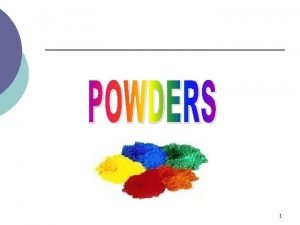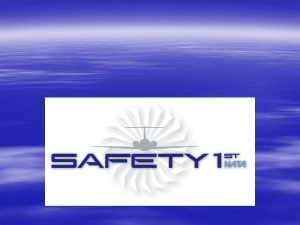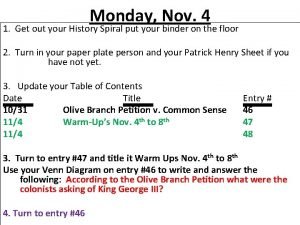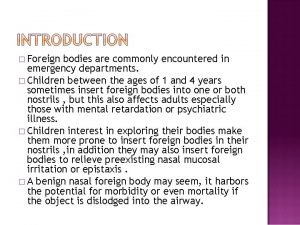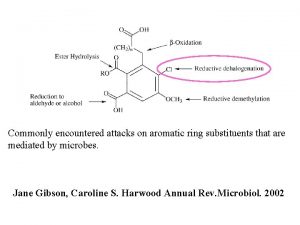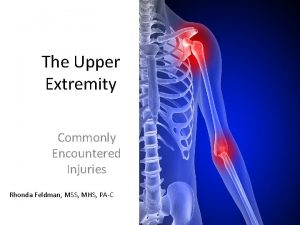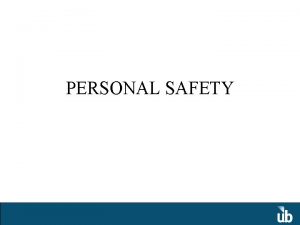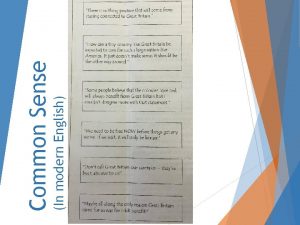Chemical Safety Commonly encountered common sense steps to















- Slides: 15

Chemical Safety Commonly encountered common sense steps to prevent common mishaps

MSDS Sheets Required to be kept by anyone in possession of chemicals (unless bought at a grocery store) n A chemical inventory must be kept n

MSDS Contents ü ü ü ü Identification Composition First Aid Fire Fighting Clean Up Handling And Storage Protection Physical And Chemical Properties ü ü ü ü Stability Toxicology Ecological Impact Disposal Transport Regulation, Additional

Warning Labels n n Flammable (red on white) – Note: the words flammable and inflammable mean the same thing Radiological (red on yellow) Poisonous (yellow on black Corrosive (black on yellow)

NFPA or Right to Know Labels n n Protect fire fighters and prevent fires Protect workers – provide warning about hazardous materials

Blue – Health Hazard n n n 4 – Deadly 3 - Extreme Danger 2 – Hazardous 1 – Slightly Hazardous 0 – Normal Material

Red – Fire Hazards (Flash Points) n 4 n n 4 – Below 73 o. F 3 – Below 100 o. F 4 – Below 200 o. F 1 – Above 200 o. F 0 – Will not burn

Yellow - Reactivity n n 4 n n n 4 – May detonate 3 – Shock and heat may detonate 2 – Violent Chemical change 1 – Unstable if heated 0 - Stable

Specific Hazard n n n Acid OXY – Oxidizer ACID – Acid ALK – Alkaline COR – Corrosive W – Use NO WATER Radiation Hazard

Proper Storage of Chemicals n n Acids and bases produce corrosive gases or fumes Alternative – store in ventilated space (cabinet under fume hood)

Handling Concentrated Acids and Bases n n 6 -12 M acids and bases Gloves, fume hood, lab coat, goggles or face shields

Dissolving strong acids and bases n n n “Always add acid to water, like you oughta’” Same is true for bases Heat is released as acid or base goes into solution If there is a lot of acid and little water, the water will boil and spatter Common injuries include eye damage and facial scars

Phenol Water-saturated Phenol: Used to precipitate proteins n 2% Phenol: Used as disinfectant n 0. 5% Phenol: Used as topical analgesic n n n Water-saturated Phenol causes (deep) chemical burns The first thing it does is numbs the skin so you don’t know its there Then in absorbs all the water from the tissue The skin and flesh dies and flakes off exposing nerve endings Wear (amber) laytex or (blue) nitrile gloves

Ethidium Bromide n n Used to stain nucleic acids Intercalates (wedges in between stacked base pairs) Causes frameshift mutations Always were gloves when handling

Acrylamide n n n Used in PAGE: Monomer is converted to polyacrylamide Monomer is neurotoxic, and suspected mutagen, carcinogen, and teratogen Polymer is (relatively) harmless
 Powders in pharmaceutics
Powders in pharmaceutics Narrow sense heritability vs broad sense heritability
Narrow sense heritability vs broad sense heritability Narrow sense heritability vs broad sense heritability
Narrow sense heritability vs broad sense heritability Common sense sociology
Common sense sociology Qqqnn
Qqqnn Common sense and sociological explanations
Common sense and sociological explanations Right attitude and common sense
Right attitude and common sense Common sense as a cultural system
Common sense as a cultural system Olive branch petition and common sense venn diagram
Olive branch petition and common sense venn diagram Venn diagram of olive branch petition and common sense
Venn diagram of olive branch petition and common sense Sociology and common sense
Sociology and common sense Common sense is published
Common sense is published Venn diagram of olive branch petition and common sense
Venn diagram of olive branch petition and common sense Common sense education fair and square
Common sense education fair and square Common sense of purpose in the workplace
Common sense of purpose in the workplace Social psychology and common sense
Social psychology and common sense
